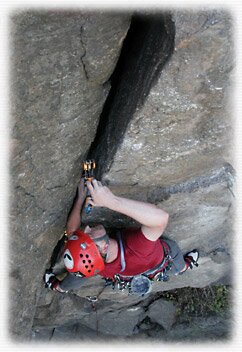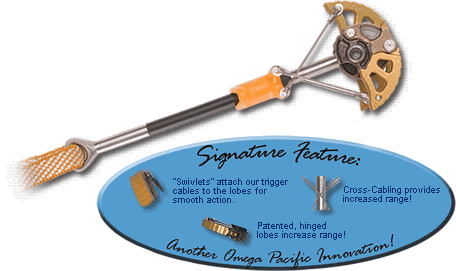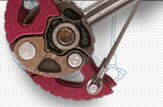|

Building on a revolutionary concept from legendary gear designer, Greg Lowe, Link Cams operate on a simple concept of trisecting a cam lobe so that, as the device is retracted, the cam unfolds and permits an amazing range for a unit of its size.
Utilizing a reliable, single-axle design and with a camming ratio of over 2.5:1, Link Cams provide more range per size than any other spring-loaded camming device available!
Extended range means you can leave the ground with fewer pieces on your rack; no more doubling up on pieces you think you “might” need if you’re unsure where, exactly, you’ll need doubles of one particular piece. Likewise, for backcountry climbers, it means packing in less gear. And as a “crux piece” you need RIGHT NOW, Link Cam’s large range increases your odds of picking the right size the first time you go to your rack.
Mechanically-speaking, Link Cams are as innovative as the concept behind their design. Built with a hybrid blend of materials and advanced MIM process, Link Cams are the most sophisticated and modern camming devices in the world. The two, inner links on each lobe unit are built by a modern process known as Metal-Injection-Molding which permits us to create detailed, precision pieces—like casting—with increased strength and are made from 17-4 aircraft stainless steel. The outer link is machined from 7000-series aluminum alloy.
Although Link Cams aren’t necessarily more difficult to place than other cams, they do require careful consideration to avoid damaging them or compromising the placement. Link Cams should be placed carefully and deliberately, with a critical eye and the ability to assess a proper, solid placement. If climbers aren’t experienced at assessing nuances of placements, instruction should be sought before using Link Cams.
 Here are a few more pointers: Here are a few more pointers:
- Assess the overall placement for quality of the rock. Dense, solid stone makes for better placements, generally. Flaky, loose rock or expanding flakes should be avoided, whenever possible.
- Attempt to place cams so that there is maximum contact between the lobes and the feature, ensuring that the load is as equally distributed as possible between all four lobesets.
- Place cams so that they are neither “tipped out” nor “overcammed” as either instance can make the placement less stable or difficult to remove. As a general rule, deploy Link Cams so they are within 70% of their maximum range and 10% of their minimum, fully-retracted position.
- Clip a carabiner and a longer sling to the sewn sling on wandering routes or under roofs to prevent the cams from “walking.”
- Be sure to anticipate direction of load, should you fall or weight the cam. This is particularly important with Link Cams, due to their unique construction. Since they are built using trisected cam lobes, Link Cams can become damaged—and the placement may fail—if a load is placed that makes the cam “shift” when a climber falls onto it. We are constantly researching ways to improve the strength and durability of Link Cams, but it is critical that Link Cams be placed with direction of load in mind. You should always place any removable protection with this principle in mind, of course, but Link Cams in particular should be placed so that the stem is aimed directly toward the ground and, when loaded, the position of the axle does not rotate during a fall or when bounce-testing. Although Link Cams’ flexible stems can help “correct” a less-than-ideal placement, it is still important that the initial placement be made in proper alignment with anticipated load.
- Visually inspect every placement before relying on it! This is an excellent discipline regardless of which piece of gear you use, but with Link Cams, proper placement is crucial to maximizing safety and effectiveness. Placing a piece “blind” can often lead to an improperly-placed cam and may not be reliable. If a Link Cam is not able to be placed properly, in direction of anticipated load, select another piece.
- CE/UIAA certified and made in the USA
Link Cams are built in our modern, ISO 9001 Certified facility in Washington State and are certified to both CE and UIAA standards and specifications.
|









